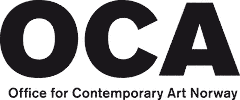









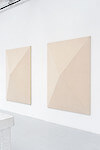
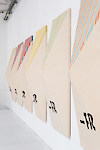
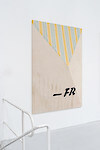
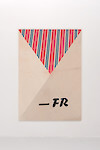
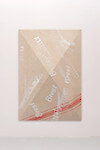
Querelle of Brest
For his first institutional exhibition Norwegian artist Fredrik Værslev will present a group of new paintings combining patterns and creation processes from three different series. The artist will show pyramidal shaped-canvases on which stripes from the Canopy series reappear amongst white marks left by a line-tracer and ready-made logos appropriated from the graphic identity of the art center Passerelle. This is a strategy Fredrik Værslev previously employed on various occasions, creating a very literal link to the context of the exhibition.
Another act of appropriation is the title of the show: “Querelle of Brest”. One could be tempted to apply gender theory via Jean Genet and Rainer W. Fassbinder, or perhaps he’s simply pointing to an interest in the city of Brest and its cultural heritage, but that would be to fall into the artist’s trap. On closer inspection the repetitive, obsessional and radical aspect of the whole series points to something more treacherous, a dead-end even. This doesn't exclude the fact that the boundaries of subjectivity (but resolutely not of intimacy) are obviously at stake in Fredrik Værslev's works.
The reflexive use of such a resonant title (the word “Brest” and the letters “-FR” standing for France in various communication tools of the art center) does not preclude the telling or recollection of fictitious stories. Myriad hypotheses could be put forward about the influences of the immediate visual surroundings of the artist or his approximate and fantastical idea of a certain location. According to the Værslev, however, words are only as signs, purely pictorial or decorative elements. The potential meaning of those words and their associations,... [lire plus]
1. Two-Lane Blacktop, Monte Hellman's 1971 film
2. Hubert Damisch, “Remarks on Abstraction”, translated from French by Rosalind Krauss, in October, n°127, Winter 2009, Massachusetts Institute of Technology Press, p136
Curator : Caroline Soyez-Petithomme
With the support of Avec le soutien de lthe Norwegian Embassy in France and OCA – Office for Contemporary Art Norway.

